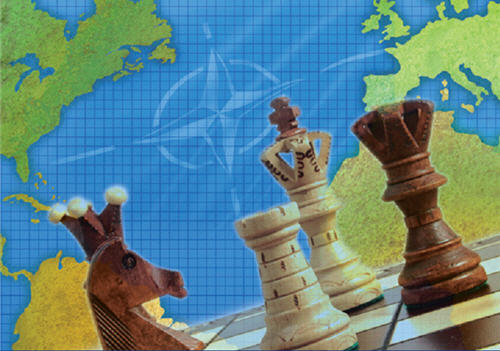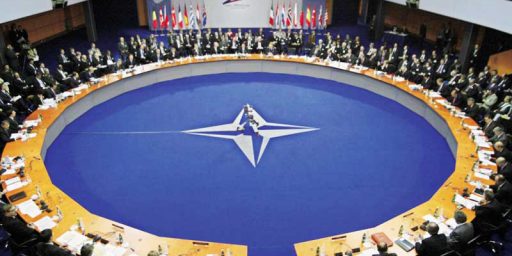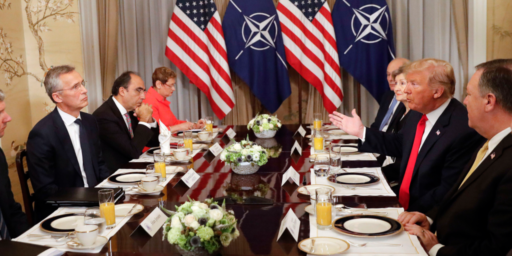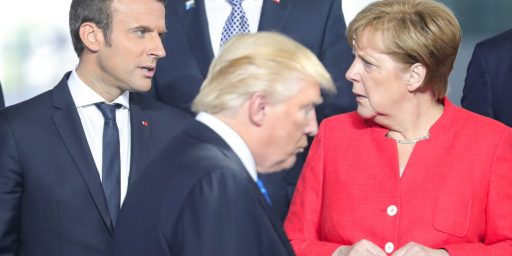NATO’s New Strategic Concept: Active Engagement, Modern Defense
The long awaited new strategic concept, launching what has been termed "NATO 3.0," has been published under the banner "Active Engagement, Modern Defense."
The long awaited new strategic concept, launching what has been termed “NATO 3.0,” has been published under the banner “Active Engagement, Modern Defense.”
Over at New Atlanticist, I’ve given a pretty thorough synopsis, the title of which gives away the punch line: “NATO: New Strategic Concept, Same Old Alliance.”
NATO pledges to “maintain the ability to sustain concurrent major joint operations and several smaller operations for collective defense and crisis response, including at strategic distance.” To do this, they will “carry out the necessary training, exercises, contingency planning and information exchange for assuring our defence against the full range of conventional and emerging security challenges, and provide appropriate visible assurance and reinforcement for all Allies.”
That’s all well and good. Alas, the very countries pledging to do all that are cutting their military capability to the bone and giving every indication that the cuts will be permanent, if not a first step down a slippery slope. How on earth will they make good on these promises, given that sad fact?
For one thing, the Concept pledges to redouble efforts to work out arms control agreements with Russia, still the most looming threat — particularly to the Alliance’s easternmost members. For another, NATO will promote and cultivate “a wide network of partner relationships with countries and organizations around the globe.” Most notably, the Alliance will seek more intertwined operating relationships with the United Nations and the European Union. But they’ll also strive to work more closely with Russia and Central Europe through the existing but moribund Euro-Atlantic Partnership Council and Partnership for Peace.
But these solutions raise more questions than they answer. While achieving efficiencies and burden sharing with like-minded organizations seeking the same objectives is a no-brainer, it’s far from clear that the UN, EAPC, and P4P meet that standard. And, while the EU is an obvious candidate for closer partnership — squabbling between Greece and Turkey notwithstanding — it’s not as if there’s some magic pot of money there. The most significant European militaries of NATO and the EU are identical, after all.
Overall, the robust promises made by the new Strategic Concept are heartening, indeed, to Atlanticists everywhere. But it’s no more clear today than it was yesterday how it is we’ll keep them.
Much more at the link but that’s my bottom line.







Shorter version of the New Strategic Concept: everything will be peachy as long as we can free-ride off the good ol’ U. S. of A.
I saw we lost an F-22 yesterday (hope the pilot is okay)…1 of 167 down.